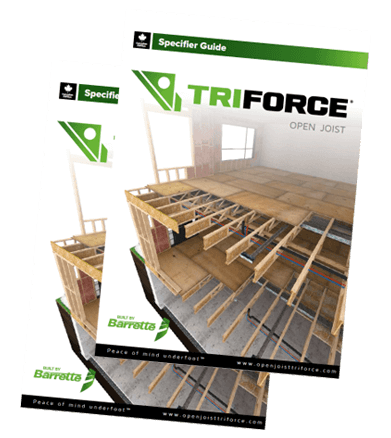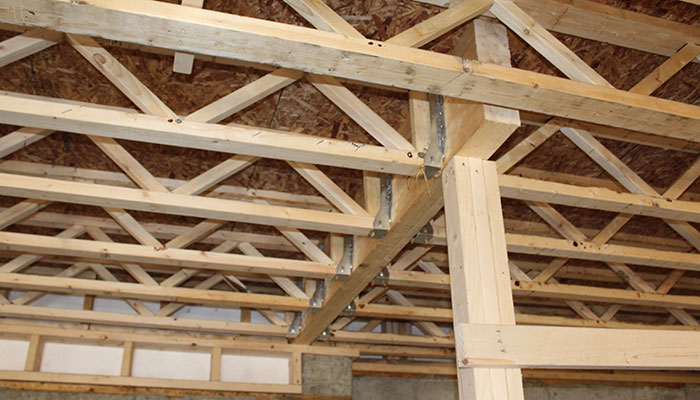Combining wood and steel in joists is nothing new. But is this combination of materials really the best choice when it comes to handling, installation and long-term use?
Last week we looked at wood-steel joists using wood chords with steel webbing. This week, we’ll compare TRIFORCE® open joist to floor trusses
Floor trusses combine a wood structure with metal connectors

Contrary to steel-webbed joists or all wood joists this type of joist must be designed to exact lengths and cannot be trimmed on site. If a measurement issue occurs, then the floor truss must be replaced entirely, following an approval process with the designing engineer.
They are rugged and can be built for very long spans. Although robust, floor trusses are also heavy and difficult to handle on the jobsite. The weight comes partially from their metal connector plates. These are sharp and can score electrical wiring.
If a metal plate gets separated from the Joist during handling, it can potentially compromise the entire joist. Expect up to a 4-6 week delivery time during peak ordering season.
Finally it must be noted that this type of truss is far more expensive than the TRIFORCE® open joist. Also keep in mind that this type of truss cannot be manufactured in shallow depths.
TRIFORCE® open joist

Combining lightness and open web design but without metal connectors to interfere with electrical wiring, TRIFORCE® open joist is much easier to handle and ideal for MEP installations. It is made entirely from #2 SPF and MSR SPF certified wood making it the best environmental choice in this comparison. Since it has no metal parts, it isn’t subject to corrosion. It is designed to provide floor assemblies with strength and rigidity, and is trimmable onsite.
Finally, TRIFORCE® is also available in 11 7/8, 14” or 16” sizes. Delivery can take between 1-3 weeks.
Which joist would you rather have on your site?


do you have roof truss also or only floor truss let me know
THANKS
LUCIEN
This is really interesting! I always assumed that trusses combining wood and metal would have been a lot more stable than other examples. I guess you are right though– a triforce open joist does not interfere with electrical wiring or the like. If given the chance, I think I would choose it as well.
Thanks very much Luke! You might be interested in seeing an example of Triforce helping mechanical installations on a big project. Today’s blog post is on York Beach Residence Club Project in York, Maine. check out the pictures!
Eric